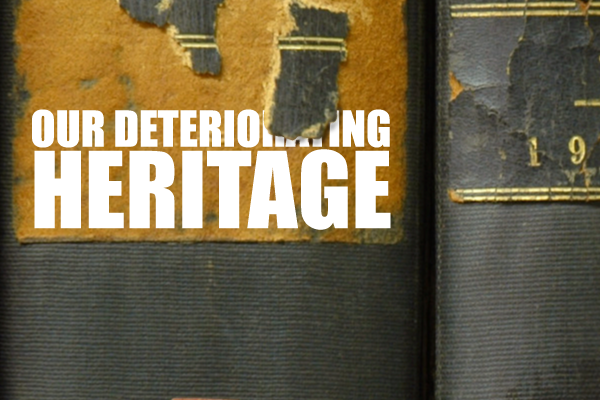In case you missed it, last week, the Royal Society of Canada released its expert panel report on Canada’s libraries, archives and public memory. Its analysis of the current state of Library and Archives Canada is scathing to say the least.
The expert panel used words like “embarrassment” and “appalling” to describe what’s happened to the institution responsible for our collective documentary heritage. The main sources of frustration among Canada’s academic community stem, in part, from the 2004 merger of the National Archives and the National Library and the 2012 budget cuts.
“In Australia, New Zealand and the EU, the merger of LAC is presented as an appalling model to be avoided by libraries and archives,” declared the authors.
The merger promised easy and integrated access to our national documentary heritage. Instead of reaping the benefits of convergence, the authors contend that the merger resulted in discord between librarians, archivists and record managers.
“We are told that morale is at an absolute low, with some of the morale deficit attributed to human resource issues associated with the merger of the organizations.”
Enter the April 30, 2012 budget cuts; a day that is colloquially called “Black Monday” in the archivist community. A reduction of 23% of LAC’s full-time employees is expected by 2016. The Royal Society has called these service reductions “draconian”.
In the report, Dr. Ronald Rudin, a Concordia University professor of history, details his recent frustrating experience dealing with LAC. With the loss of specialised staff and no access to digitized finding aids, Rudin ultimately had to make a second trip to Ottawa to accomplish his research.
“I am sure that there are stories that are more dramatic,” he wrote, “but you might keep in mind that I have 40 years of experience with using the LAC, and so I can only imagine how the various barriers would have discouraged someone doing this for the first time.”
Rudin remarked that he had no complaints about the LAC staff, “all of whom were courteous and clearly overworked.” He did note, however, that the absence of sufficient staff made his experience unnecessarily complicated.
The report also points to some of the programs that have either been eliminated or curtailed as a result of the 2012 budget cuts. Gone is the National Archival Development program, which helped support over 800 archives across Canada over the last 26 years. Scrapped are public exhibitions and the Portrait Gallery initiative. Digitization keeps dragging on (the Canadian Association of University Teachers estimates that at the current rate of spending on digitization, it would take LAC 300 to 700 years to digitize its published holdings). And since LAC’s budget for acquisitions has been slashed, more and more of our national treasures are ending up in the hands of foreign private collectors.
The Royal Society has offered a number of practical recommendations that could dramatically improve things at LAC.
“We sympathize with the challenges presented to LAC by budget reduction, as do the majority of LAC’s institutional stakeholders who know that changes are required to cope with declining resources, since they have been similarly tested,” the authors wrote.
“But, dialogue – lacking in LAC decision-making for a decade or more – can often achieve compromise solutions. In this regard, stakeholders also know that with some consultation they can help coordinate new processes to address service gaps.”
